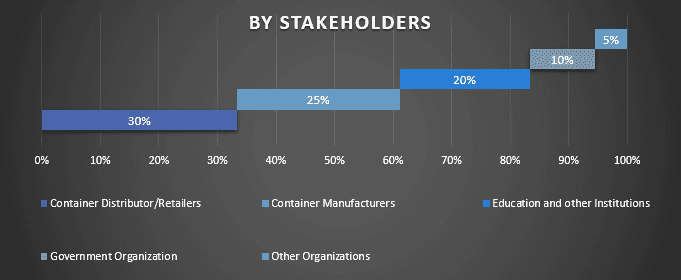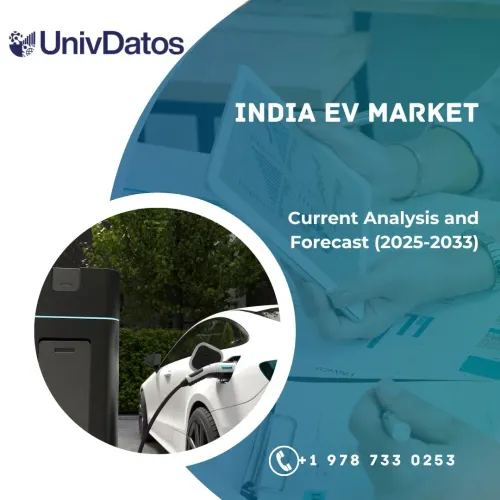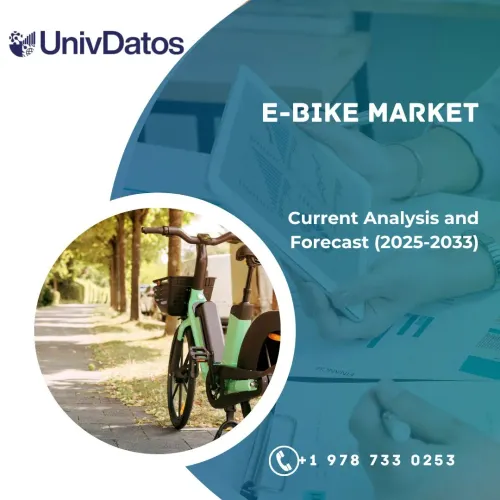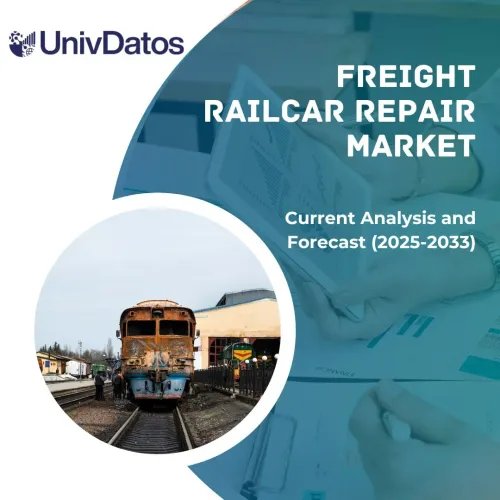- Home
- About Us
- Industry
- Services
- Reading
- Contact Us
India Container Market: Current Analysis and Forecast (2022-2028)
Emphasis on Product (20 Feet, 40 Feet, 45 Feet); End-Use (Food & Beverage, Consumer Goods, Industrial Goods, Healthcare, and Others).

The India Container Market is expected to grow at a significant rate of around 2% during the forecast period. The Indian container market is growing at a substantial rate mainly owing to the several policy reforms in place bolstering the container trade against the global slowdown. Improvement in transshipment numbers at Indian ports, direct port delivery (DPD), direct port entry (DPE), increase in authorized economic operators (AEOs), port community systems (PCS), digitization and automation of cargo movement through port gates, etc are some of the key areas of improvement notably aiding the market towards an upward trend. In addition, healthy competition among major and private ports is improving the container volume growth at each port year-over-year is creating opportunities in the Indian container market.
Hyundai Ltd., A.P. Moller, and Maersk, COSCOShipping Development Co., Ltd., China International Marine Container (Group) Ltd., CXIC Group, Singamas Container Holdings Limited, Hapag-Lloyd AG, Evergreen Marine Corporation, MSC Mediterranean Shipping Company S.A, and Yang Ming.
Insights Presented in the Report
“Amongst product, 40 feet category to witness robust CAGR during the forecast period”
Based on the product, the container market is classified into 0 feet, 40 feet, and 45 feet. The 40 feet segment caters substantial share of the market. Factors such as increased durability and large space offered by 40 feet containers are contributing to their high adoption across various applications. In addition, India has emerged as the world’s fastest-growing economy for the past five years owing to the rising demand for consumer goods and services.
“Amongst end-use, food & beverage segment to hold a significant share in the market in 2020”
Based on end-use, the container market is segmented into food & beverage, consumer goods, industrial goods, healthcare, and others. The food & beverages segment caters considerable share of the market. Perishable food items and beverages deteriorate quickly if exposed to humidity or extreme temperature. Reefer containers play a vital role in the transportation of perishable food items as they offer exceptionally large storage space for cooling while easy to transport and can be placed in many locations. As a result, the increasing trade of agriculture and processed food is expected to boost the demand for containers in the food & beverage segment over the coming years.
Reasons to buy this report:
- The study includes market sizing and forecasting analysis validated by authenticated key industry experts.
- The report presents a quick review of overall industry performance at one glance.
- The report covers an in-depth analysis of prominent industry peers with a primary focus on key business financials, product portfolio, expansion strategies, and recent developments.
- Detailed examination of drivers, restraints, key trends, and opportunities prevailing in the industry.
- The study comprehensively covers the market across different segments.
- Deep dive regional level analysis of the industry.
Customization Options:
The India Container market can further be customized as per the requirement or any other market segment. Besides this, UMI understands that you may have your own business needs, hence feel free to connect with us to get a report that completely suits your requirements.
Table of Content
Research Methodology for the India Container Market Analysis (2022-2028)
Analyzing the historical market, estimating the current market, and forecasting the future market of the India Container market were the three major steps undertaken to create and analyze the adoption of Container in major India. Exhaustive secondary research was conducted to collect the historical market numbers and estimate the current market size. Secondly, to validate these insights, numerous findings and assumptions were taken into consideration. Moreover, exhaustive primary interviews were also conducted, with industry experts across the value chain of the India container market. Post assumption and validation of market numbers through primary interviews, we employed a top-down/bottom-up approach to forecasting the complete market size. Thereafter, market breakdown and data triangulation methods were adopted to estimate and analyze the market size of segments and sub-segments of the industry pertains to. Detailed methodology is explained below:
Analysis of Historical Market Size
Step 1: In-Depth Study of Secondary Sources:
Detail secondary study was conducted to obtain the historical market size of the Container market through company internal sources such as annual reports & financial statements, performance presentations, press releases, etc., and external sources including journals, news & articles, government publications, competitor publications, sector reports, third-party database, and other credible publications.
Step 2: Market Segmentation:
After obtaining the historical market size of the Container market, we conducted a detailed secondary analysis to gather historical market insights and share for different segments & sub-segments for India. Major segments are included in the report as product and end-use. Further country-level analyses were conducted to evaluate the overall adoption of testing models in that country.
Step 3: Factor Analysis:
After acquiring the historical market size of different segments and sub-segments, we conducted a detailed factor analysis to estimate the current market size of the Container market. Further, we conducted factor analysis using dependent and independent variables such as various products and end-use. A thorough analysis was conducted for demand and supply-side scenarios considering top partnerships, mergers and acquisitions, business expansion, and product launches in the Container market sector in the country.
Current Market Size Estimate & Forecast
Current Market Sizing: Based on actionable insights from the above 3 steps, we arrived at the current market size, key players in the India Container market, and market shares of the segments. All the required percentage shares split, and market breakdowns were determined using the above-mentioned secondary approach and were verified through primary interviews.
Estimation & Forecasting: For market estimation and forecast, weights were assigned to different factors including drivers & trends, restraints, and opportunities available for the stakeholders. After analyzing these factors, relevant forecasting techniques i.e., the top-down/bottom-up approach were applied to arrive at the market forecast for 2028 for different segments and sub-segments across the major Indian market. The research methodology adopted to estimate the market size encompasses:
- The industry’s market size, in terms of revenue (USD) and the adoption rate of the Container market across the major markets domestically
- All percentage shares, splits, and breakdowns of market segments and sub-segments
- Key players in the India Container market in terms of the product offered. Also, the growth strategies adopted by these players to compete in the fast-growing market
Market Size and Share Validation
Primary Research: In-depth interviews were conducted with the Key Opinion Leaders (KOLs) including Top Level Executives (CXO/VPs, Sales Head, Marketing Head, Operational Head, Regional Head, Country Head, etc.) across major regions. Primary research findings were then summarized, and statistical analysis was performed to prove the stated hypothesis. Inputs from primary research were consolidated with secondary findings, hence turning information into actionable insights.
Split of Primary Participants in Different Regions

Market Engineering
The data triangulation technique was employed to complete the overall market estimation and to arrive at precise statistical numbers for each segment and sub-segment of the India Container market. Data was split into several segments & sub-segments post studying various parameters and trends in the areas of products and end-use in the India Container market.
The main objective of the India Container Market Study
The current & future market trends of the Indian container market were pinpointed in the study. Investors can gain strategic insights to base their discretion for investments on the qualitative and quantitative analysis performed in the study. Current and future market trends determined the overall attractiveness of the market at a regional level, providing a platform for the industrial participant to exploit the untapped market to benefit from a first-mover advantage. Other quantitative goals of the studies include:
- Analyze the current and forecast market size of the Container market in terms of value (USD). Also, analyze the current and forecast market size of different segments and sub-segments
- Segments in the study include areas of products and end-use.
- Define and analysis of the regulatory framework for the Container
- Analyze the value chain involved with the presence of various intermediaries, along with analyzing customer and competitor behaviors of the industry.
- Analyze the current and forecast market size of the Container market in India.
- Company profiles of the Container market and the growth strategies adopted by the market players to sustain in the fast-growing market
Deep dive regional level analysis of the industry
Related Reports
Customers who bought this item also bought










